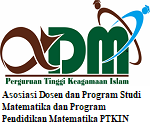Control of The Spread of TB-HIV/AIDS Coinfection Using Optimal Control
DOI:
https://doi.org/10.15642/mantik.2021.7.1.96-106Keywords:
TB-HIV/AIDS coinfection, Pontryagin, Fourth order Runge-KuttaAbstract
The condition in which an individual is affected by TB and HIV/AIDS in his body is called a TB-HIV/AIDS coinfection. This research aims to minimize the populations of TB-HIV/AIDS coinfection with a minimum expenditure on medical expenses, that means minimizing the objective’s function ( ) or purpose function. In this research, modification of the model was carried out by adding the treatment population for HIV patients with ARV ( ). The population used was 11 classes with the use of three controls including treatment for individuals with latent TB ( ), active TB ( ), and HIV ( ). After performing numerical simulation using the forward backward fourth order Runge-Kutta, the results show that scenario 7 is the best scenario in controlling the spread of TB-HIV/AIDS coinfection because it resulted a minimum value of 1401,44. This means that providing the treatment for individuals with latent TB, active TB, and HIV in tandem can reduce the populations of TB-HIV/AIDS coinfection in the minimum treatment cost.
Downloads
References
W. Sukokarlinda, “Analisis dan kontrol optimal pada model penyebaran virus HIV dalam tubuh manusia,” Skripsi, 2012.
UNAIDS, “Fact sheet - Global AIDS update 2019,” UNAIDS, pp. 1–6, 2019.
UNAIDS, “Country Indonesia,” UNAIDS, 2019. [Online]. Available: https://www.unaids.org/en/regionscountries/countries/indonesia. [Accessed: 25-Sep-2019].
A. H. M. Zeth, A. H. Asdie, A. G. Mukti, and J. Mansoden, “Perilaku dan risiko penyakit HIV-AIDS di masyarakat papua studi pengembangan model lokal kebijakan HIV-AIDS,” J. Manaj. Pelayanan Kesehat., vol. 13, no. 4, pp. 206–219, 2010.
S. Murni, C. W. Green, S. Djauzi, A. Setiyanto, and S. Okta, Hidup dengan HIV/AIDS. Jakarta: Spiritia, 2009.
A. Khan, J. F. G. Aguilar, T. S. Khan, and H. Khan, “Stability analysis and numerical solutions of fractional order HIV/AIDS model,” Chaos, Solitons and Fractals, vol. 122, pp. 119–128, 2019.
A. Rusli, “Koinfeksi HIV & TB,” 2014.
WHO, Global Tuberculosis report. WHO (World Health Organization), 2018.
CDC, “Latent TB infection and TB disease,” 2016. [Online]. Available: https://www.cdc.gov/tb/topic/basics/tbinfectiondisease.htm. [Accessed: 19-Sep-2019].
Setiawan, “Kontrol optimal penyebaran tuberkulosis dengan exogenous reinfection,” Indonesia University, 2012.
I. Marlina, Tuberkulosis, vol. 2, no. 1. Jakarta: Kemenkes RI, 2018.
J. Nainggolan, “Kontrol pengobatan optimal pada model penyebaran Tuberkulosis tipe SEIT,” E-Jurnal Mat., vol. 6, no. 2, p. 137, 2017.
S. N. Rayhan, “Kontrol optimum penyebaran koinfeksi penyakit tuberkulosis dan HIV/AIDS,” Intitut Pertanian Bogor (IPB), 2017.
CDC, Core Curriculum on Tuberculosis, Sixth Edit. (CDC) Centers for Disease Control and Prevention, 2013.
E. Michael and R. C. Spear, Modelling parasite transmission and control. New York, USA: Springer Science & Business Media, 2010.
WHO, The health academy avoiding Tuberculosis. Switzerland: Geneva, 2004.
Bolarin and Omatola, “A mathematical analysis of HIV/TB co-infection model,” Appl. Math., vol. 6, no. 4, pp. 65–72, 2006.
G. R. Rose, Numerical methods for solving optimal control problems. University of Tennessee, 2015.
E. R. Hidayah, “Kontrol optimal model pertumbuhan tumor dengan imunoterapi,” Skripsi, 2016.
D. peng Gao and N. jing Huang, “Optimal control analysis of a Tuberculosis model,” Appl. Math. Model., vol. 58, pp. 47–64, 2018.
C. . Bhunu, W. Garira, and Z. Mukandavire, “Modelling HIV/AIDS and Tuberculosis coinfection,” Bull. Math. Biol., vol. 71, pp. 1745–1780, 2009.
Tanvi and R. Aggarwal, “Dynamics of HIV-TB co-infection with detection as optimal intervention strategy,” Int. J. Non-Linear Machanics, vol. 516, pp. 280–307, 2019.
Huzaimah, “Metode analitik dan metode Runge-Kutta orde 4 dalam penyelesaian persamaan getaran pegas teredam,” Universitas Islam Negeri Maulana Malik Ibrahim, Malang, 2016.
Subhashini and Srividhya, “Comparison of several numerical algorithms with the use of predictor and corrector for solving ODE,” Int. J. Trend Sci. Res. Dev., vol. 3, pp. 1057–1060, 2019.
Puspitasari, Intan, A. Sutrisno, T. Ruby, and M. Ansori, “Pembandingan metode Runge-Kutta orde 4 dan Metode Adam-Bashfort Moulton dalam penyelesaian model pertumbuhan uang yang diinvestasikan,” in Prosiding Seminar Nasional Metode Kuantitatif 2017, 2010, pp. 328–340.
A. Chiang, Fundamental method of mathematical economics fourth edition. New York: The McGraw-Hill, 2005.
D. S. Naidu, Optimal control systems. New York: CRC Press, 2002.
F. Puspitasari, “Masalah kontrol optimal pada model penyebaran penyakit demam berdarah dengan pengaruh musim,” Institut Teknologi Bandung, 2017.
S. A. Hardiyanti, “Kontrol optimal sistem perawatan produksi dengan memperhatikan kerusakan produk dan tingkat diskon,” Institut Teknologi Sepuluh Nopember, Surabaya, 2016.
Fatmawati and H. Tasman, “An optimal treatment control of TB-HIV coinfection,” Int. J. Math. Math. Sci., 2016.
Downloads
Published
How to Cite
Issue
Section
License
- Authors retain copyright and grant the journal right of first publication with the work simultaneously licensed under a Creative Commons License that allows others to share the work with an acknowledgment of the work's authorship and initial publication in this journal.
- Authors are able to enter into separate, additional contractual arrangements for the non-exclusive distribution of the journal's published version of the work (e.g., post it to an institutional repository or publish it in a book), with an acknowledgment of its initial publication in this journal.
- Authors are permitted and encouraged to post their work online (e.g., in institutional repositories or on their website) prior to and during the submission process, as it can lead to productive exchanges, as well as earlier and greater citation of published work







.png)




